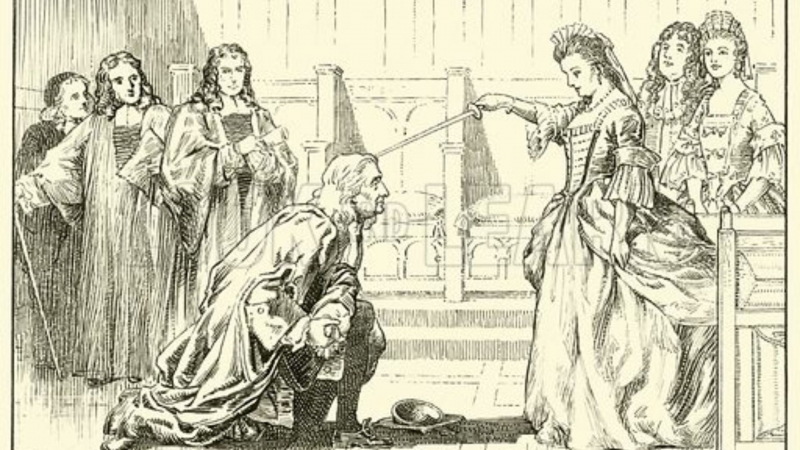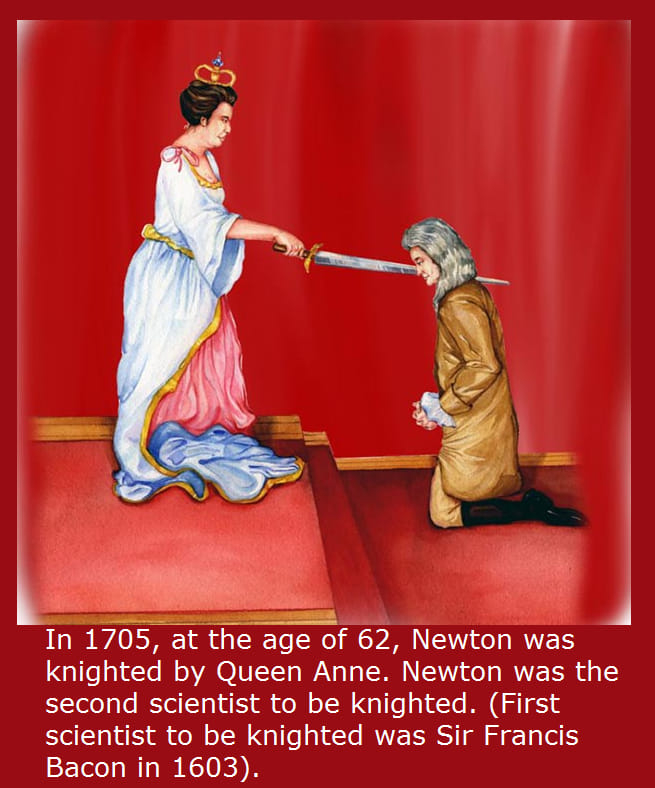Sir Isaac Newton was knighted by the Queen Anne
Newton joined the Royal Mint as a warden in 1696, an organization that creates, or mints, coins in the United Kingdom. In 1699, he was appointed Master of the Mint, the Royal Mint's top officer. Newton took his responsibilities seriously and left Cambridge in 1701. He used his powers to punish counterfeiters, and in 1717, he passed the "Law of Queen Anne," which changed the Pound Sterling's gold standard from silver to gold. Newton was knighted by Queen Anne in 1705. Rather than his contributions to science or the Royal Mint, his knighthood was driven by political concerns surrounding the Parliamentary election in May 1705. After Sir Francis Bacon, Sir Isaac Newton became the second scientist to be knighted.
He'd amassed fortune after inheriting his mother's estate after her death in 1679, and he'd also written two significant books, "Mathematical Principles of Natural Philosophy" (commonly known as the "Principia") in 1687 and "Opticks" in 1704. The famed scientist was buried in Westminster Abbey, the resting place of English monarchs as well as notable non-royals like as Charles Darwin, Charles Dickens, and explorer David Livingstone, when he died in March 1727 at the age of 84.












